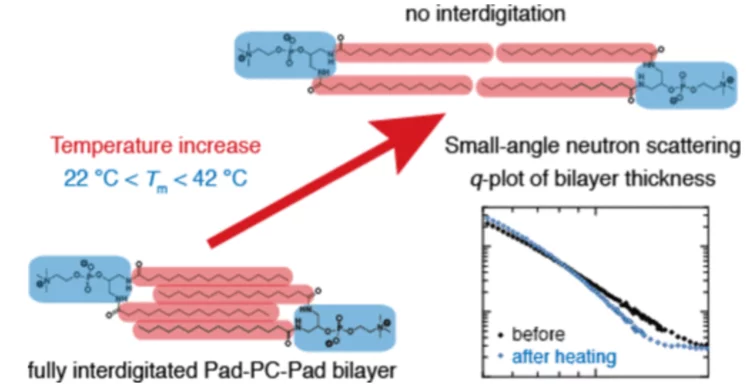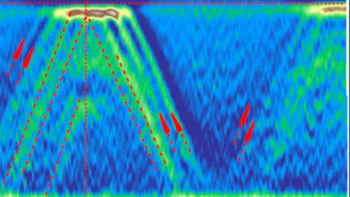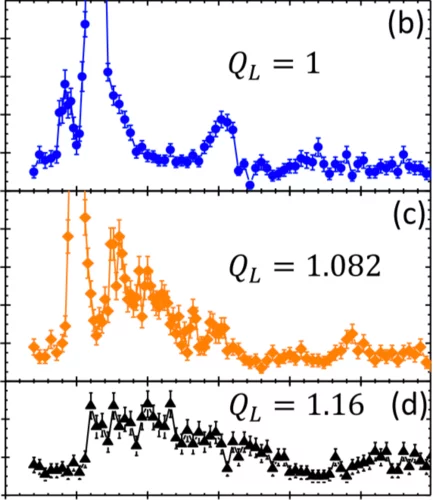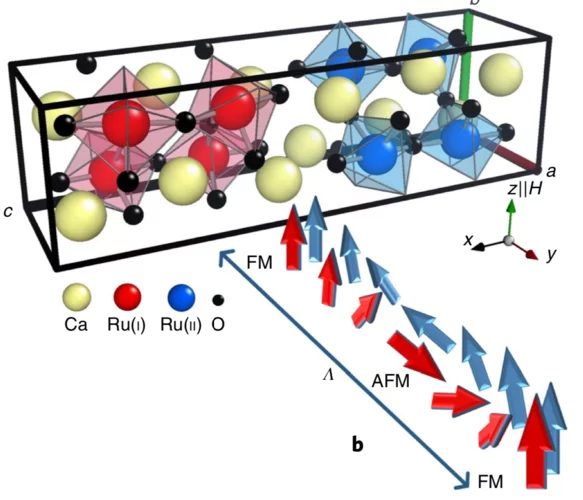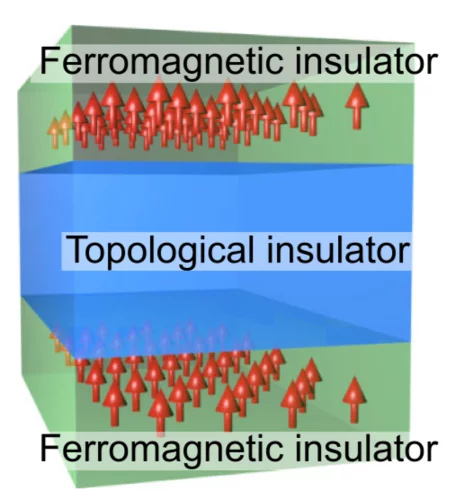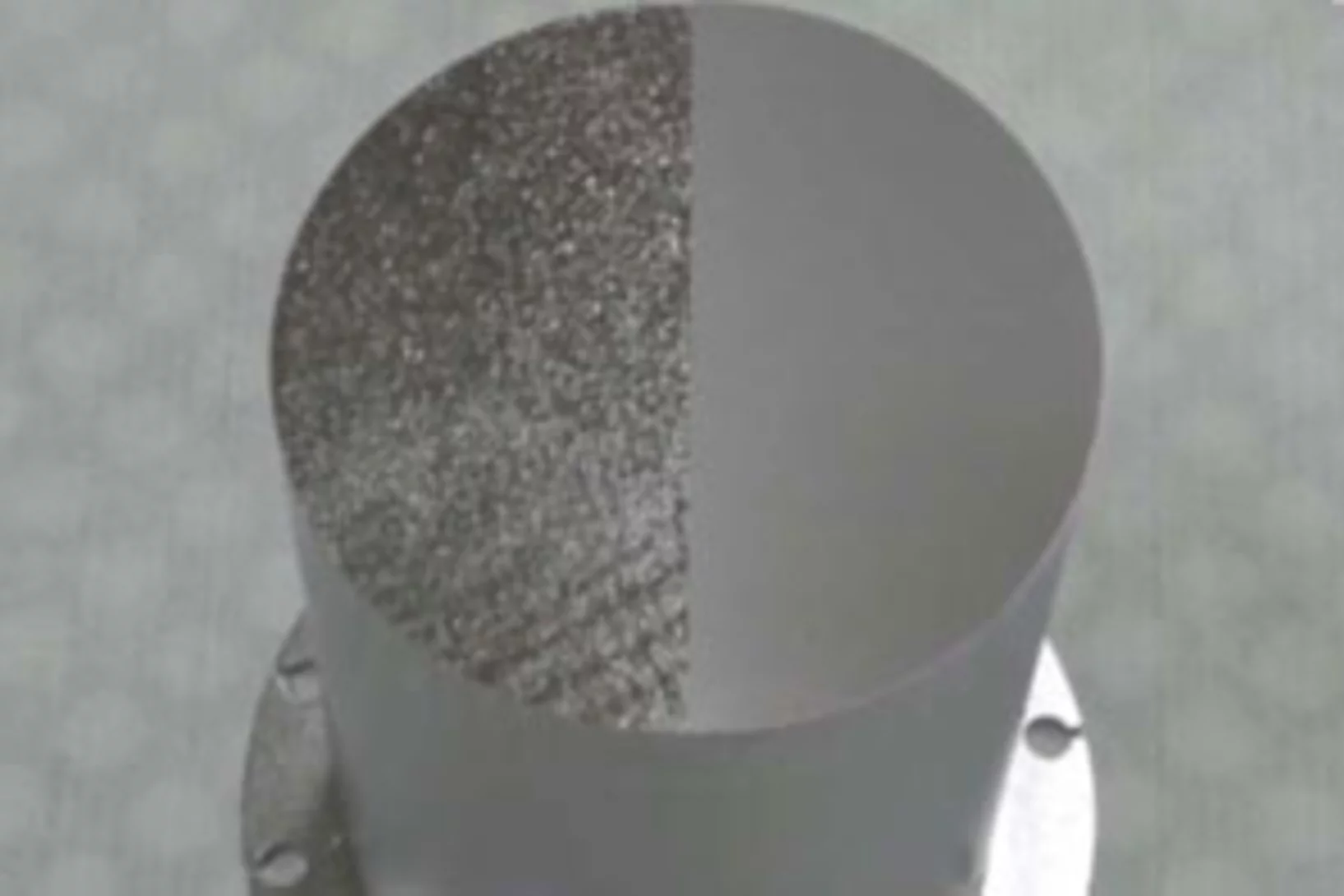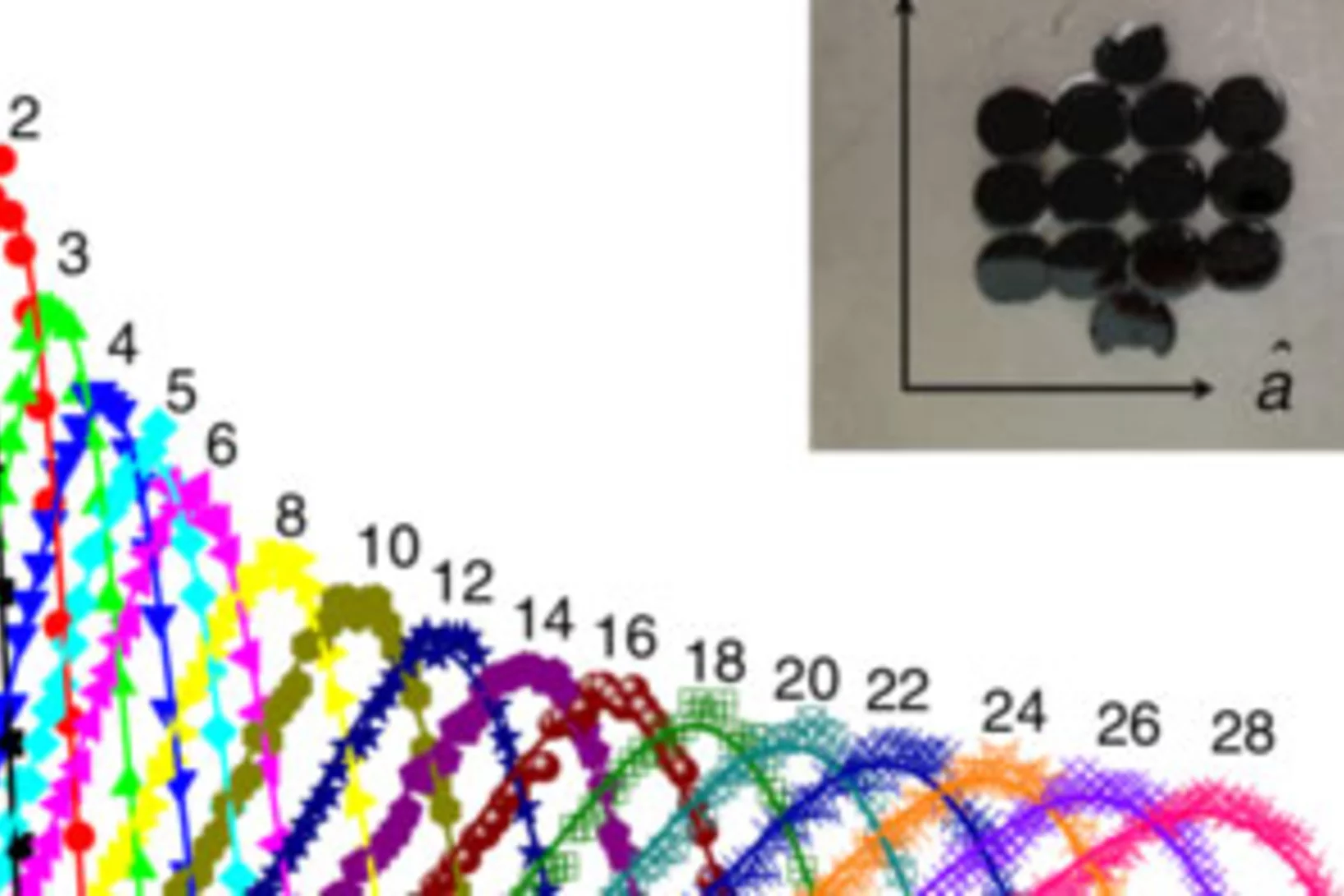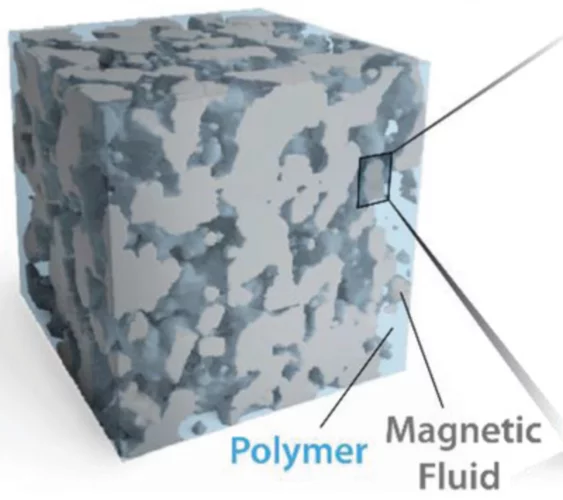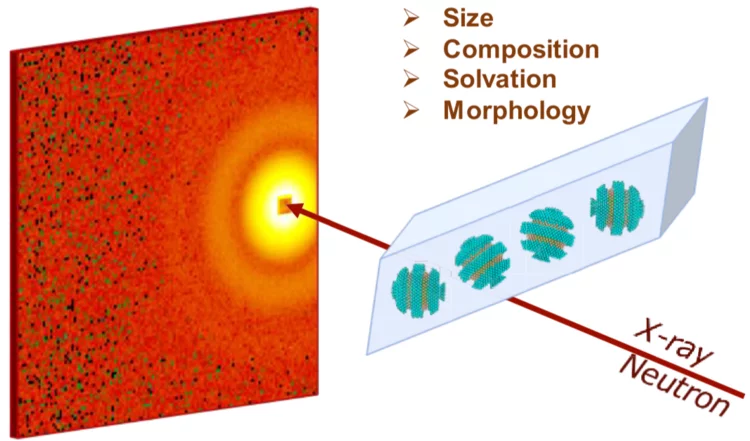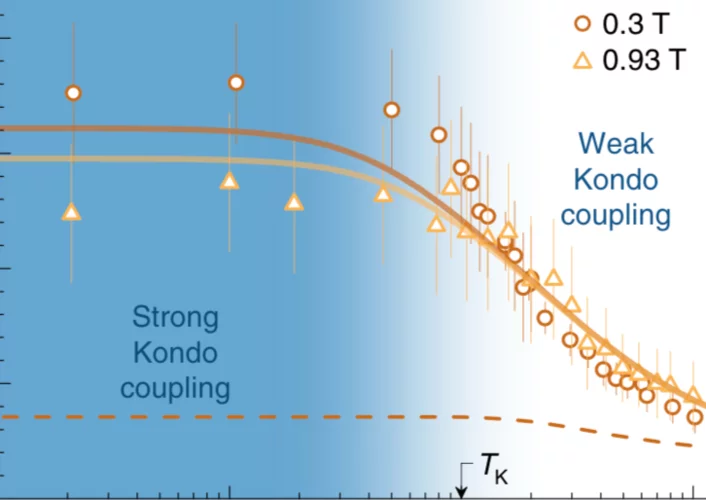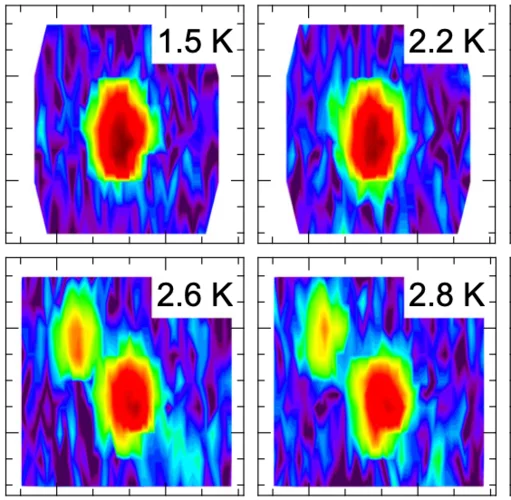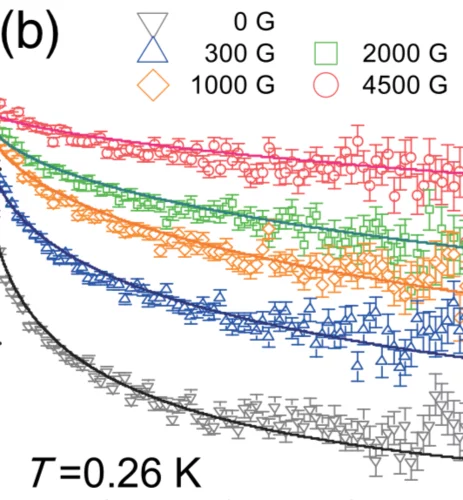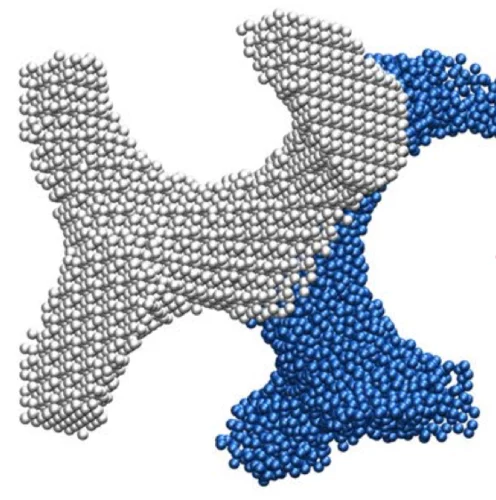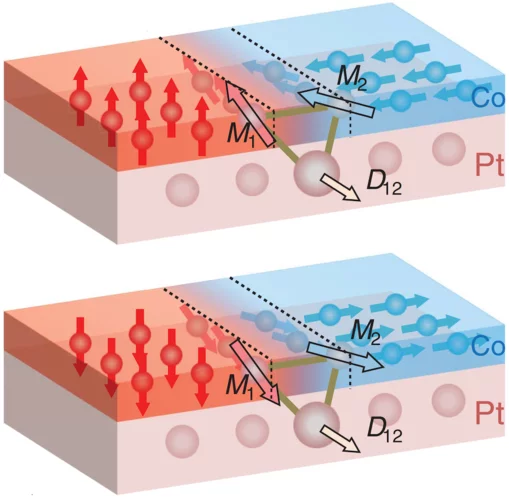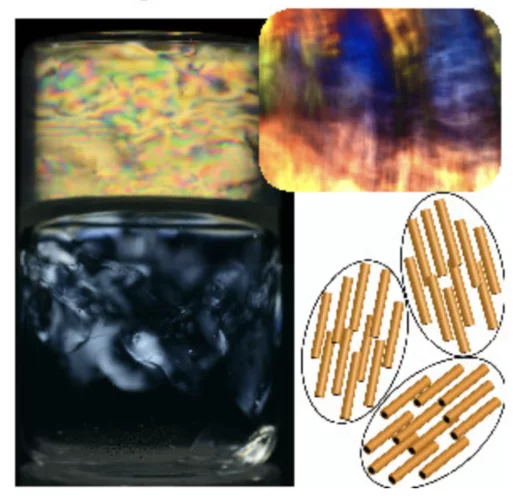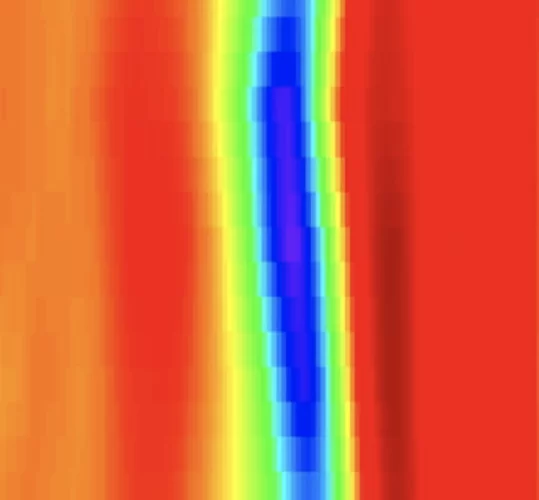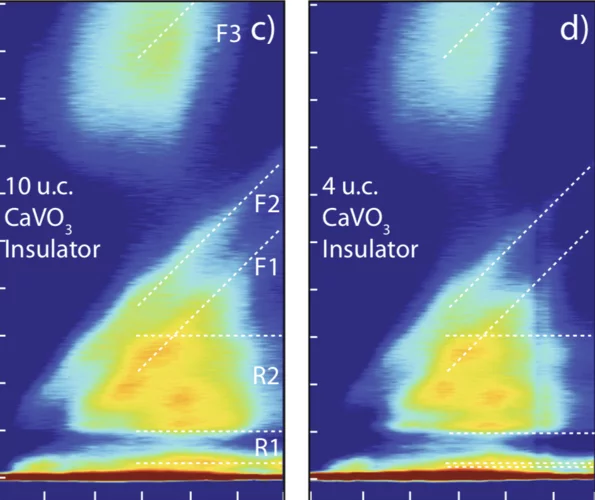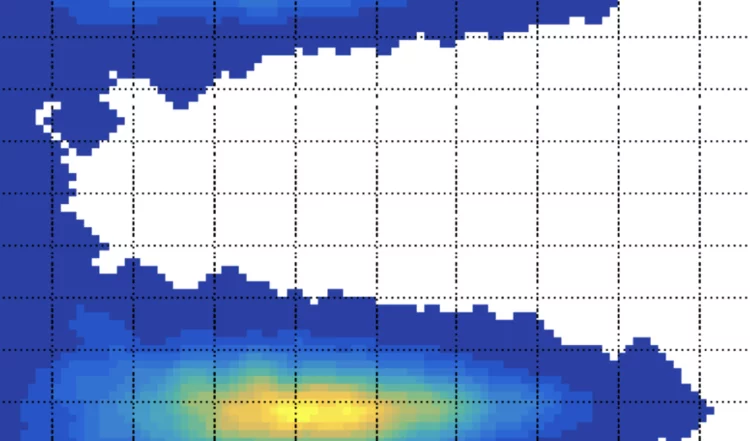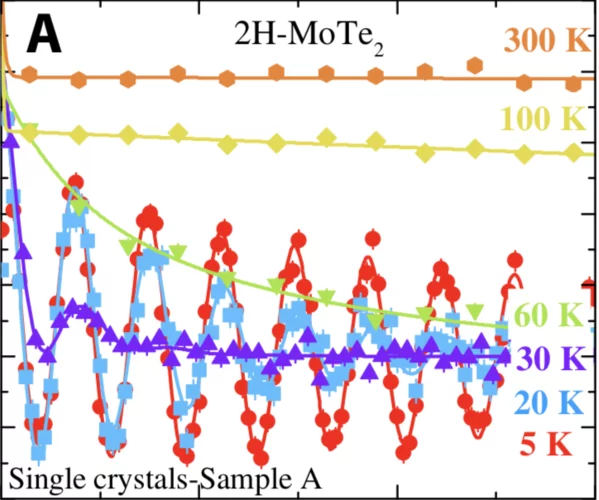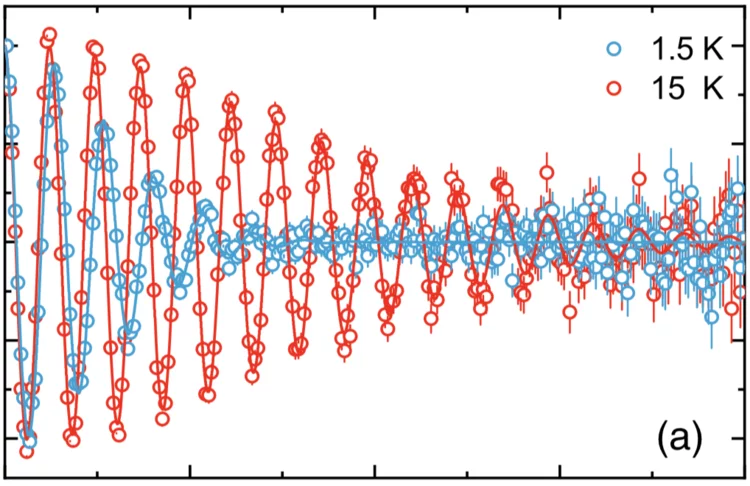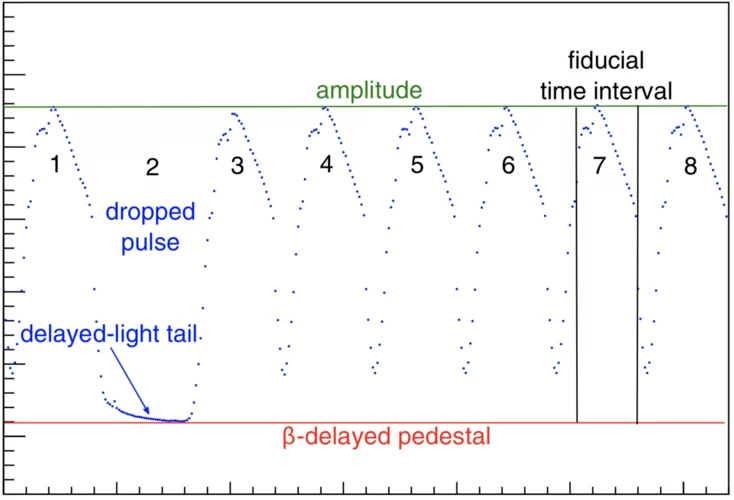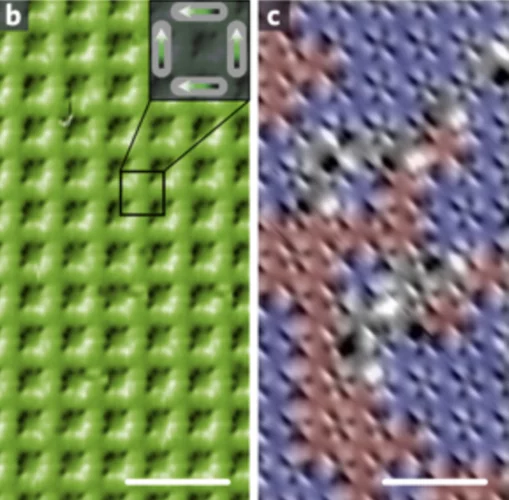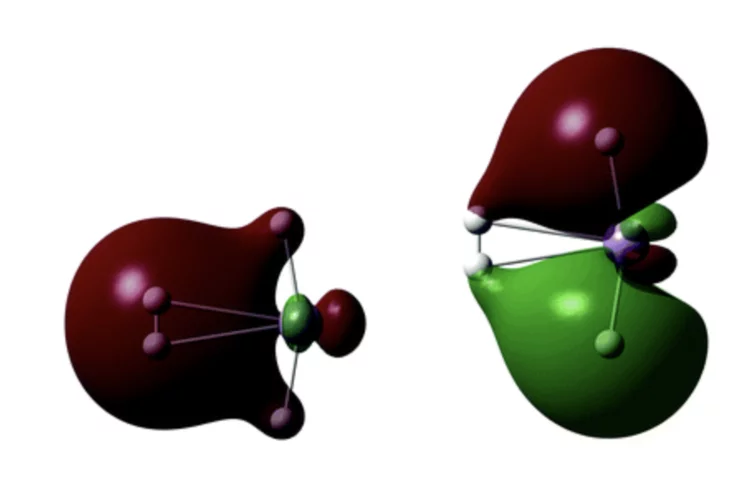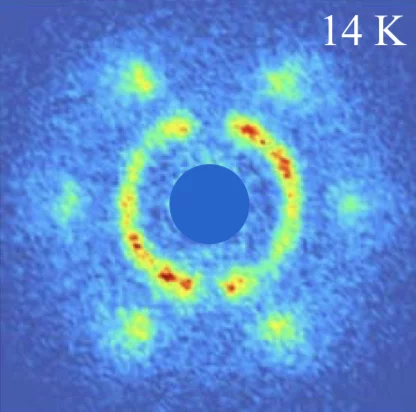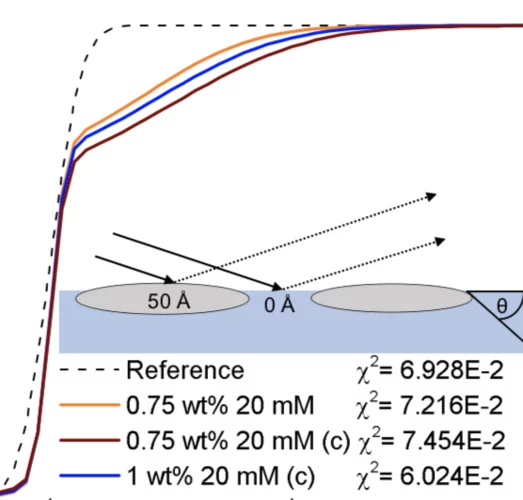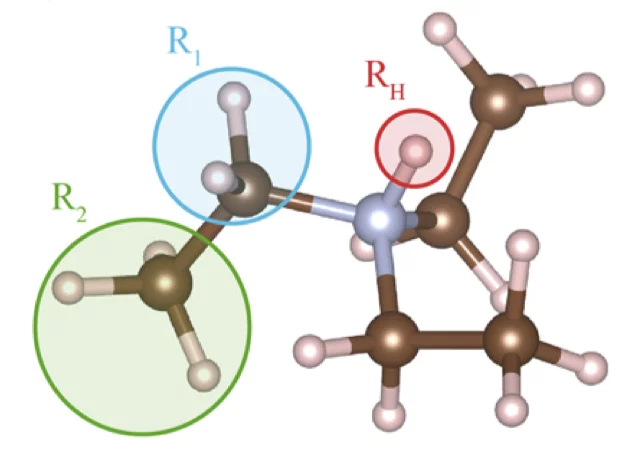Small-Angle Neutron Scattering Study of Temperature-Induced Structural Changes in Liposomes
Liposomes of specific artificial phospholipids, such as Pad-PC-Pad and Rad-PC-Rad, are mechanically responsive. They can release encapsulated therapeutics via physical stimuli, as naturally present in blood flow of constricted vessel segments. The question is how these synthetic liposomes change their structure in the medically relevant temperature range from 22 to 42 °C.
Experimental signatures of a three-dimensional quantum spin liquid in effective spin-1/2 Ce2Zr2O7 pyrochlore
A quantum spin liquid is a state of matter where unpaired electrons’ spins, although entangled, do not show magnetic order even at the zero temperature. The realization of a quantum spin liquid is a long-sought goal in condensed-matter physics.
Spin fluctuation induced Weyl semimetal state in the paramagnetic phase of EuCd2As2
Weyl fermions as emergent quasiparticles can arise in Weyl semimetals (WSMs) in which the energy bands are nondegenerate, resulting from inversion or time-reversal symmetry breaking. Nevertheless, experimental evidence for magnetically induced WSMs is scarce. Here, using photoemission spectroscopy, we observe that the degeneracy of Bloch bands is already lifted in the paramagnetic phase of EuCd2As2. We attribute this effect to the itinerant electrons experiencing quasi-static and quasi–long-range ferromagnetic fluctuations.
Soft biomimetic nanoconfinement promotes amorphous water over ice
Water is a ubiquitous liquid with unique physicochemical properties, whose nature has shaped our planet and life as we know it. Water in restricted geometries has different properties than in bulk. Confinement can prevent low-temperature crystalliza- tion of the molecules into a hexagonal structure and thus create a state of amorphous water. To understand the survival of life at subzero temperatures, it is essential to elucidate this behaviour in the presence of nanoconfining lipidic membranes.
Tomonaga-Luttinger Liquid Spin Dynamics in the Quasi-One-Dimensional Ising-Like Antiferromagnet BaCo2V2O8
Combining inelastic neutron scattering and numerical simulations, we study the quasi-one-dimensional Ising anisotropic quantum antiferromagnet BaCo2V2O8 in a longitudinal magnetic field. This material shows a quantum phase transition from a Néel ordered phase at zero field to a longitudinal incommensurate spin density wave at a critical magnetic field of 3.8 T.
Metamagnetic texture in a polar antiferromagnet
The notion of a simple ordered state implies homogeneity. If the order is established by a broken symmetry, the elementary Landau theory of phase transitions shows that only one symmetry mode describes this state. At the exact points of phase coexistence, domain states composed of large regions of different phases can be stabilized by long-range interactions.
Large Anomalous Hall Effect in Topological Insulators with Proximitized Ferromagnetic Insulators
We report a proximity-driven large anomalous Hall effect in all-telluride heterostructures consisting of the ferromagnetic insulator Cr2Ge2Te6 and topological insulator (Bi,Sb)2Te3. Despite small magnetization in the (Bi,Sb)2Te3 layer, the anomalous Hall conductivity reaches a large value of 0.2e2/h in accord with a ferromagnetic response of the Cr2Ge2Te6.
Critical fields of Nb3Sn prepared for superconducting cavities
Nb3Sn is currently the most promising material other than niobium for future superconducting radiofrequency cavities. Critical fields above 120 mT in pulsed operation and about 80 mT in CW have been achieved in cavity tests. This is large compared to the lower critical field as derived from the London penetration depth, extracted from low field surface impedance measurements.
Phase transition in the cuprates from a magnetic-field-free stiffness meter viewpoint
A method to measure the superconducting (SC) stiffness tensor ρs, without subjecting the sample to external magnetic field, is applied to La1.875Sr0.125CuO4. The method is based on the London equation J=-ρsA, where J is the current density and A is the vector potential which is applied in the SC state.
Magnetically Addressable Shape-Memory and Stiffening in a Composite Elastomer
With a specific stimulus, shape‐memory materials can assume a temporary shape and subsequently recover their original shape, a functionality that renders them relevant for applications in fields such as biomedicine, aerospace, and wearable electronics. Shape‐memory in polymers and composites is usually achieved by exploiting a thermal transition to program a temporary shape and subsequently recover the original shape.
Multidimensional Characterization of Mixed Ligand Nanoparticles Using Small Angle Neutron Scattering
The properties of ligand protected gold nanoparticles are determined by the synergistic interplay of their structural components, including the metal core, the ligand shell, and the solvation layer. However, the simultaneous characterization of all these components remains a major challenge given their disparate chemical nature.
Kondo screening in a charge-insulating spinon metal
The Kondo effect, an eminent manifestation of many-body physics in condensed matter, is traditionally explained as exchange scattering of conduction electrons on a spinful impurity in a metal. The resulting screening of the impurity's local moment by the electron Fermi sea is characterized by a Kondo temperature TK, below which the system enters a strongly coupled regime.
Elementary excitation in the spin-stripe phase in quantum chains
Elementary excitations in condensed matter capture the complex many-body dynamics of interacting basic entities in a simple quasiparticle picture. In magnetic systems the most established quasiparticles are magnons, collective excitations that reside in ordered spin structures, and spinons, their fractional counterparts that emerge in disordered, yet correlated spin states.
Exotic Low-Energy Excitations Emergent in the Random Kitaev Magnet Cu2IrO3
We report on magnetization M(H), dc and ac magnetic susceptibility Χ(T), specific heat Cm(T) and muon spin relaxation (μSR) measurements of the Kitaev honeycomb iridate Cu2IrO3 with quenched disorder. In spite of the chemical disorders, we find no indication of spin glass down to 260 mK from the Cm(T) and μSR data.
Soft biomimetic nanoconfinement promotes amorphous water over ice
Water is a ubiquitous liquid with unique physicochemical properties, whose nature has shaped our planet and life as we know it. Water in restricted geometries has different properties than in bulk. Confinement can prevent low-temperature crystalliza- tion of the molecules into a hexagonal structure and thus create a state of amorphous water. To understand the survival of life at subzero temperatures, it is essential to elucidate this behaviour in the presence of nanoconfining lipidic membranes.
Chirally coupled nanomagnets
Magnetically coupled nanomagnets have multiple applications in nonvolatile memories, logic gates, and sensors. The most effective couplings have been found to occur between the magnetic layers in a vertical stack. We achieved strong coupling of laterally adjacent nanomagnets using the interfacial Dzyaloshinskii-Moriya interaction. This coupling is mediated by chiral domain walls between out-of-plane and in-plane magnetic regions and dominates the behavior of nanomagnets below a critical size.
Ion-Induced Formation of Nanocrystalline Cellulose Colloidal Glasses Containing Nematic Domains
Controlling the assembly of colloids in dispersion is a fundamental approach toward the production of functional materials. Nanocrystalline cellulose (NCC) is a charged nanoparticle whose colloidal interactions can be modulated from repulsive to attractive by increasing ionic strength.
Negative flat band magnetism in a spin–orbit-coupled correlated kagome magnet
Electronic systems with flat bands are predicted to be a fertile ground for hosting emergent phenomena including unconven- tional magnetism and superconductivity, but materials that manifest this feature are rare. Here, we use scanning tunnelling microscopy to elucidate the atomically resolved electronic states and their magnetic response in the kagome magnet Co3Sn2S2.
Electronic localization in CaVO3 films via bandwidth control
Understanding and controlling the electronic structure of thin layers of quantum materials is a crucial first step towards designing heterostructures where new phases and phenomena, including the metal-insulator transition (MIT), emerge. Here, we demonstrate control of the MIT via tuning electronic bandwidth and local site environment through selection of the number of atomic layers deposited.
Anisotropic Diffusion and Phase Behavior of Cellulose Nanocrystal Suspensions
In this paper, we use dynamic light scattering in polarized and depolarized modes to determine the translational and rotational diffusion coefficients of concentrated rodlike cellulose nanocrystals in aqueous suspension. Within the range of studied concentrations (1–5 wt %), the suspension starts a phase transition from an isotropic to an anisotropic state as shown by polarized light microscopy and viscosity measurements.
Search for the Magnetic Monopole at a Magnetoelectric Surface
We show, by solving Maxwell’s equations, that an electric charge on the surface of a slab of a linear magnetoelectric material generates an image magnetic monopole below the surface provided that the magnetoelectric has a diagonal component in its magnetoelectric response. The image monopole, in turn, generates an ideal monopolar magnetic field outside of the slab.
Detailed polarization measurements of the prompt emission of five gamma-ray bursts
Gamma-ray bursts (GRBs) are the strongest explosions in the Universe since the Big Bang. They are believed to be produced either in the formation of black holes at the end of massive star evolution or the merging of compact objects.
Magnetism in semiconducting molybdenum dichalcogenides
Transition metal dichalcogenides (TMDs) are interesting for understanding the fundamental physics of two-dimensional (2D) materials as well as for applications to many emerging technologies, including spin electronics.
Time-Reversal Symmetry Breaking in Re-Based Superconductors
To trace the origin of time-reversal symmetry breaking (TRSB) in Re-based superconductors, we performed comparative muon-spin rotation and relaxation (μSR) studies of superconducting noncentro-symmetric Re0.82Nb0.18 (Tc=8.8 K) and centrosymmetric Re (Tc=2.7 K).
First Observation of P-odd γ Asymmetry in Polarized Neutron Capture on Hydrogen
We report the first observation of the parity-violating gamma-ray asymmetry Aγnp in neutron-proton capture using polarized cold neutrons incident on a liquid parahydrogen target at the Spallation Neutron Source at Oak Ridge National Laboratory.
Poling of an artificial magneto-toroidal crystal
Although ferromagnetism is known to be of enormous importance, the exploitation of materials with a compensated (for example, antiferromagnetic) arrangement of long-range ordered magnetic moments is still in its infancy. Antiferromagnetism is more robust against external perturbations, exhibits ultrafast responses of the spin system and is key to phenomena such as exchange bias, magnetically induced ferroelectricity or certain magnetoresistance phenomena.
A manganese hydride molecular sieve for practical hydrogen storage under ambient conditions
A viable hydrogen economy has thus far been hampered by the lack of convenient hydrogen storage solutions for long hauls and transportation/delivery infrastructure. Current approaches require high pressure and/or complex heat management systems to achieve acceptable storage densities. Development of hydrogen storage solutions operating at near ambient conditions can mitigate the complexity, cost and safety perception issues currently hindering the hydrogen economy.
Multiple-q noncollinear magnetism in an itinerant hexagonal magnet
Multiple-q spin order, i.e., a spin texture characterized by a multiple number of coexisting magnetic modulation vec- tors q, has recently attracted attention as a source of nontrivial magnetic topology and associated emergent phenome- na. One typical example is the triple-q skyrmion lattice state stabilized by Dzyaloshinskii-Moriya interactions in noncentrosymmetric magnets, while the emergence of various multiple-q states of different origins is expected according to the latest theories.
Adsorption and Interfacial Layer Structure of Unmodified Nanocrystalline Cellulose at Air/Water Interfaces
Nanocrystalline cellulose (NCC) is a promising biological nanoparticle for the stabilization of fluid interfaces, which is however poorly understood due to the inability to form controlled NCC interfacial layers. Herein we present parameters that allow the adsorption of unmodified NCC at the air-water (A/W) interface. Initial NCC adsorption is limited by diffusion, followed by monolayer saturation and decrease in surface tension at the time scale of hours.
Linking Structure to Dynamics in Protic Ionic Liquids: A Neutron Scattering Study of Correlated and Single-Particle Motions
Coupling between dynamical heterogeneity of ionic liquids and their structural periodicity on different length-scales can be directly probed by quasielastic neutron scattering with polarization analysis. The technique provides the tools to investigate single-particle and cooperative ion motions separately and, thus, dynamics of ion associations affecting the net charge transport can be experimentally explored.


